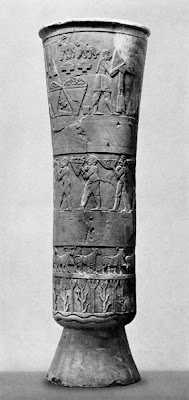On images made "not to be seen"
Examples of more or less laboriously made images “not to be seen” are, for instance, prehistoric cave art and Egyptian funerary art. Paintings in the deep recesses of caves were made under fire lamps, in dark places and preserved throughout the centuries precisely for their physical remoteness, undisturbed natural conditions and absence of light.
Egyptian artworks in tombs under the Pyramids, or in the comparatively more modest mastabas, were sealed from profane sight and dedicated to the gods, made for the gods’ eye. The image was supposed to be contemplated by otherworldly beings.
The cave, as well as the tomb, was a site of contact and passage to another reality. And so was the image. Indeed, the image was the locus of a presence, as the pre-historic image-maker understood. It was at the same time a communication channel to the supernatural or the divine, and the embodiment itself of the numinous.
The image is a communication vessel, a passage to another world and also the irruption of otherness within this world, the world of common experience. The surrealists understood it as the shamans of pre-historical times did.
As does modern psychology and neuro-psychology: the image is a communication vessel of the mind with itself, a mediator between strata or regions of mental activities and structures.
As Leonardo understood in practice: the image is in itself a form of knowledge.
Marcelo G. Lima
Egyptian artworks in tombs under the Pyramids, or in the comparatively more modest mastabas, were sealed from profane sight and dedicated to the gods, made for the gods’ eye. The image was supposed to be contemplated by otherworldly beings.
The cave, as well as the tomb, was a site of contact and passage to another reality. And so was the image. Indeed, the image was the locus of a presence, as the pre-historic image-maker understood. It was at the same time a communication channel to the supernatural or the divine, and the embodiment itself of the numinous.
The image is a communication vessel, a passage to another world and also the irruption of otherness within this world, the world of common experience. The surrealists understood it as the shamans of pre-historical times did.
As does modern psychology and neuro-psychology: the image is a communication vessel of the mind with itself, a mediator between strata or regions of mental activities and structures.
As Leonardo understood in practice: the image is in itself a form of knowledge.
Marcelo G. Lima


Comments